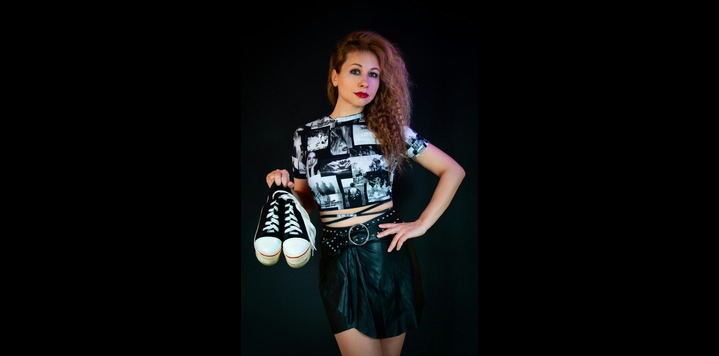Sustainable fashion refers to an environmentally friendly approach to the production of clothing items that considers the environmental, social, and economic impact of the supply chain. This involves the use of renewable materials, waste reduction, and protecting workers in garment production by promoting fair labour practices. The goal is to reduce the industry’s adverse effects on the Earth by making clothing and accessories that are kind to people and their environment. It focuses on durability, responsible utility, and quality. Fashionable people also participate in responsible gaming and can VulkanBet bonus to win slots.
Is There a Need for Sustainable Fashion?
To combat the poor practices in the garment industry, we need sustainable dressing. The conventional clothing industry engages in the exploitation of labourers, water misuse, use of toxic chemical dyes, and waste production. Fast fashion is an example of an unsustainable practice that contributes to environmental degradation. We can address issues caused by these harmful practices by promoting the use of eco-friendly materials, clear supply chains, and ethical production practices. In doing so, we create a more empathetic and aware ecosystem for a better now and tomorrow.
As customer demand for sustainable clothing rises, clothing has entered an era where style meets conscience. Let’s review some trends that will determine the landscape this year:
Vegan Leather Dominance
Vegan leather, also known as eco-leather, is made from plant-based or plastic sources to be used as an alternative to traditional leather, which is produced from animal hides. It comes from many types of plants, such as apple skins, mushroom caps, kombucha, pineapple leaves, and recycled plastic. Its growing demand in the marketplace has risen from increased demand from consumers of cruelty-free and environmentally friendly options for leather. Consumers are growing concerned about the environmental impact of vegan leather-based on plastic and that it is not biodegradable.
Circular Fashion Initiatives
Circular fashion applies the concepts of circular economy to create products with longer lifecycles, thus reducing waste. A circular economy is an economic model designed to make the best use of resources while encouraging waste reduction. The European Parliament defines this as involving “sharing, leasing, reusing, repairing, refurbishing and recycling existing materials and products as long as possible.” Companies employing this concept are more considerate of the production of an item through to the end of its life. With these initiatives, they also promote the repair, refurbishment, and recycling of the garments they produce.
Biodegradable Fabrics
These fabrics are made from organic materials that break down naturally over time with a significantly lower environmental impact. Due to the sustainable nature of these fabrics, they are suitable for disposal in your compost heap or regular trash. These fabrics, such as Abaca (Manilla Hemp), Bamboo, Organic Cotton, Hemp, Juet, and more, are known to provide superb breathability and skin-friendliness. A material such as Lyocell is an inorganic material; however, it is biodegradable and cannot be used in compost.
Multipurpose Pieces
Modular clothing is becoming a beloved addition to conscious consumers’ wardrobes. These items can be disassembled and reimagined to combine style and practicality. With durable fabric and timeless design, these garments can move from casual to formal environments or hot to chilly weather clothing.
Transparent Supply Chains
To accomplish sustainable fashion goals, transparency is the foundation upon which ethical practices and industry change are built. Conscious consumers are looking beyond the clothes on display and are demanding that brands be more open to knowing more about the sourcing of materials and the manufacturing process. Brands that are transparent about material sources, method of manufacture, and environmental impact are more likely to have higher customer trust. This trust is instrumental in customer attraction and retention while maintaining brand loyalty. This transparency extends to the treatment of workers in the supply chain, allowing them to be held accountable for ensuring fair wages and ethical labour treatment.
Slow Fashion Movement
This is a scenario where consumers of clothing items prioritize quality over quantity by encouraging mindful purchasing. Slow fashion is an antithesis of fast fashion that occurred when people noted the unsustainability of the latter, from pollution to worker exploitation. Adopting this lifestyle has economic benefits while positively impacting the environment. You can incorporate the following principles: buy less, choose well, make it last, find your community, and reduce resource consumption and waste production together.
Waterless Dyeing Techniques
After agriculture, the garment industry is one of the largest water consumers in the industrial sector. Water is used extensively in orthodox dyeing methods both in water input and effluent discharged. Waterless dyeing is a process that does not need water and uses less energy than ordinary methods while having equivalent results. This process also reduces chemical runoff, making it an eco-friendly alternative.
Currently, two primary waterless dyeing technologies are being used by the industry; air dyeing and supercritical dyeing. By employing these techniques, the water footprint will be reduced tremendously, thus saving the planet one dye at a time.
Cost of Sustainability
At first instance, sustainable and eco-friendly fashion appears to be expensive. However, the fact that they are organic makes them favourable for our health and safety. Overall, it is more cost-effective as we need to buy fewer items and use them for longer. It is healthier as we protect our environment from harmful elements and practices.
In 2024, the fashion industry will continue to be defined by sustainable practices as more consumers become aware of the harmful practices in use by the industry. These principles are a convincing option for conventional garment production with a focus on innovation, ethical practices, and environmentally friendly materials.



